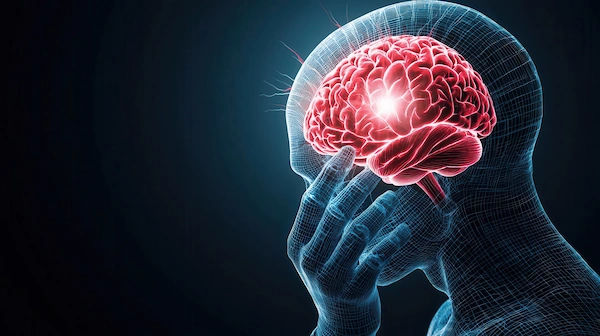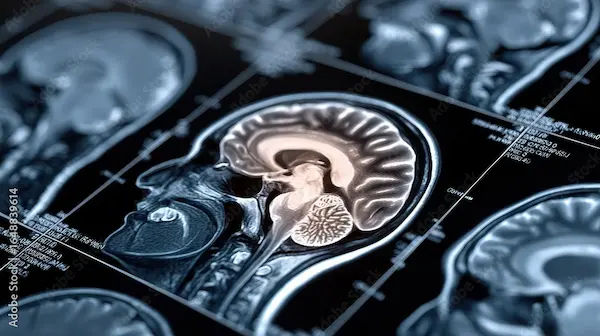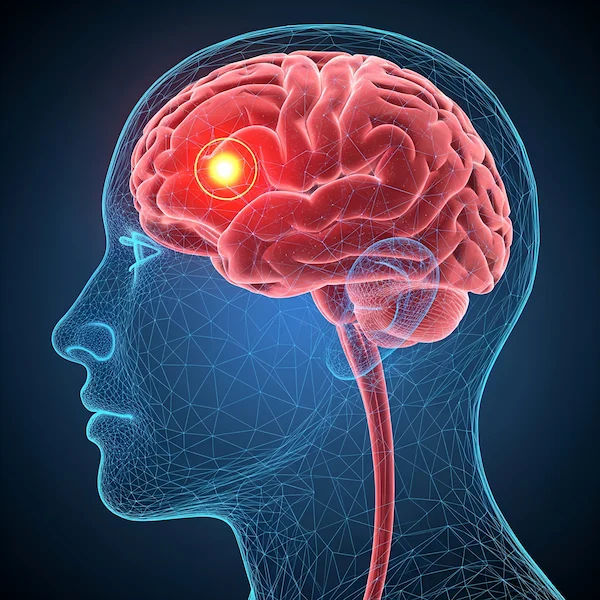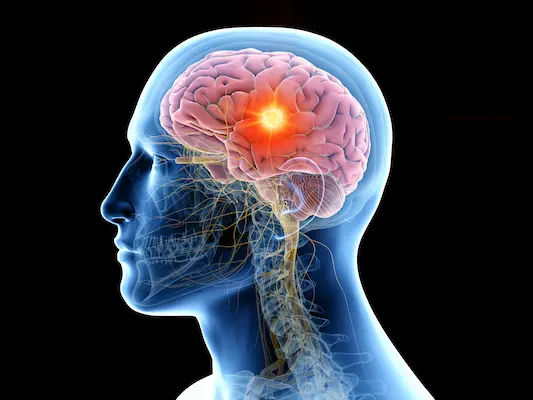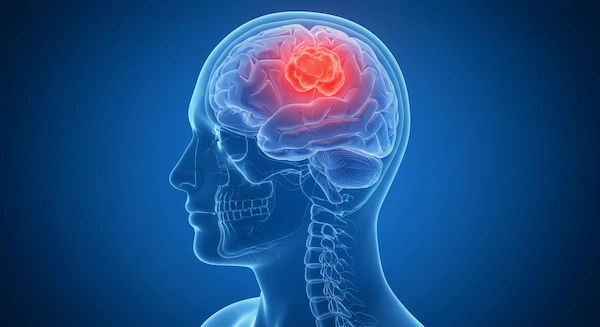Navigating Brain Tumours: A Holistic Guide to Treatment and Well-Being
Know about navigating brain tumours, what it is, comparison of tumours, diagnosis, treatment options and nurturing well-being and more.

Written by Dr. Mohammed Kamran
Reviewed by Dr. D Bhanu Prakash MBBS, AFIH, Advanced certificate in critical care medicine, Fellowship in critical care medicine
Last updated on 7th Oct, 2025
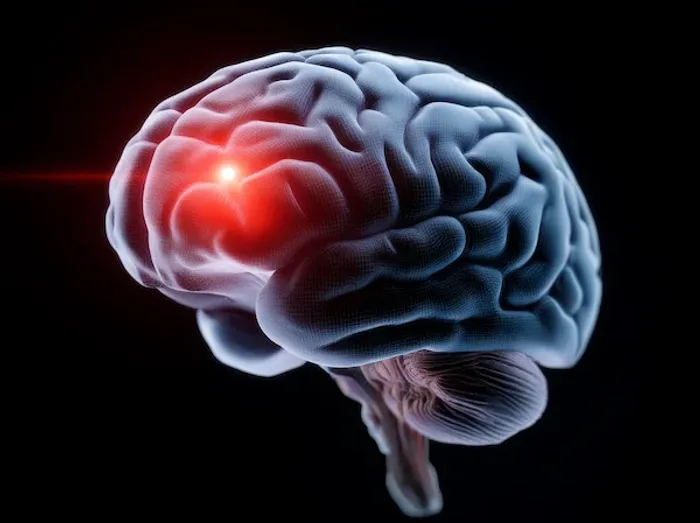
Introduction
A diagnosis of a brain tumour is a life-altering event that can feel overwhelming. The journey involves complex medical decisions, emotional upheaval, and a new vocabulary of medical terms. While understanding the clinical aspects, the types, treatments, and prognoses is crucial, true healing encompasses much more. This guide is designed not only to inform you about brain tumours but, more importantly, to empower you and your loved ones to nurture well-being every step of the way. Think of this as a roadmap for navigating the clinical path while fiercely protecting your quality of life, because your well-being is the foundation upon which everything else is built.
What is a Brain Tumour? Demystifying the Basics
At its core, a brain tumour is an abnormal mass of tissue in which cells grow and multiply uncontrollably. The skull, which protects the brain, is a closed space with limited room. Therefore, any abnormal growth inside this confined space can create pressure, leading to a range of symptoms. It's vital to understand that not all brain tumours are cancerous. The distinction lies in their behaviour and potential for growth.
Consult a Top Oncologist for Personalised Advice
Benign vs. Malignant Brain Tumours: Understanding the Difference
The terms "benign" and "malignant" are key to understanding a diagnosis.
Benign Brain Tumours: These are non-cancerous growths. They typically grow slowly, have clear borders, and do not spread to other parts of the body. However, "benign" does not mean "harmless." Depending on their size and location, a benign tumour can still cause serious health problems by pressing on sensitive areas of the brain. For example, a benign meningioma can require treatment if it affects neurological function.
Malignant Brain Tumours: These are cancerous. They contain cancer cells that grow rapidly, often invade surrounding healthy brain tissue, and can be life-threatening. The term "primary malignant brain tumour" refers to cancer that starts in the brain, like glioblastoma.
Understanding this difference between benign and malignant brain tumours is the first step in grasping the treatment goals, which can range from complete removal to long-term management.
Primary vs. Metastatic: Where the Tumour Begins
Another critical classification is the tumour's origin:
Primary Brain Tumours: These originate directly in the brain itself. They are named after the type of cell or part of the brain from which they originate (e.g., glioma from glial cells, pituitary adenoma from the pituitary gland).
Metastatic (Secondary) Brain Tumours: These are more common. They occur when cancer cells from another part of the body, such as the lung, breast, or skin (melanoma), spread (metastasise) to the brain. Treatment for metastatic tumours must also address the original cancer.
Recognizing the Signs: Common Symptoms of a Brain Tumor
The early symptoms of a brain tumour in adults can be subtle and easily mistaken for other, less serious conditions. They generally fall into two categories: those caused by increased pressure inside the skull and those related to the tumour's specific location.
General Symptoms Caused by Pressure
As a tumour grows, it takes up space, increasing intracranial pressure (ICP). This can cause:
Headaches: Often worse in the morning or when lying down, and may worsen over time or with activity.
Nausea and Vomiting: Especially upon waking, and not necessarily related to food.
Seizures: A sudden, uncontrolled electrical disturbance in the brain. A new-onset seizure is a common reason for seeking medical attention.
Vision Problems: Blurred vision, double vision, or loss of peripheral vision.
Location-Specific Symptoms: What Part of the Brain is Affected?
Different brain regions control different functions. A tumour's location dictates the specific symptoms:
Frontal Lobe: Changes in personality, judgment, and planning; weakness on one side of the body.
Temporal Lobe: Memory problems, difficulty with language (aphasia).
Parietal Lobe: Issues with sensory perception, reading, or writing.
Cerebellum: Loss of coordination, balance problems, dizziness.
If you experience persistent or worsening neurological symptoms, it is essential to consult a doctor. If symptoms like a new-onset seizure or severe, sudden headache occur, seek immediate medical attention. For ongoing evaluation, you can consult a neurologist online with Apollo24|7 to discuss your concerns.
The Diagnostic Journey: How Brain Tumours are Identified
If a brain tumour is suspected, a neurologist will guide you through a series of steps to confirm a diagnosis and determine the exact type and location.
Neurological Exams and Imaging Scans (MRI, CT)
The process typically starts with a detailed neurological exam to test vision, hearing, balance, coordination, and reflexes. This is followed by imaging:
Magnetic Resonance Imaging (MRI): This is the gold standard for viewing brain tumours. It provides detailed cross-sectional images of the brain, often using a contrast dye to highlight abnormalities.
Computed Tomography (CT) Scan: A CT scan uses X-rays to create images and can be useful in emergencies to quickly identify bleeding or a large tumour.
The Role of a Biopsy in Confirming Diagnosis
While imaging can show a mass, a biopsy is often needed for a definitive diagnosis. During a biopsy, a neurosurgeon removes a small sample of tissue, which is then analysed by a pathologist. This analysis reveals the tumour type and grade (how aggressive the cells appear), which are critical for determining the most effective treatment plan.
A Multidisciplinary Approach: Treatment Options for Brain Tumours
Treatment is highly personalised and often involves a team of specialists, including neurosurgeons, neuro-oncologists, and radiation oncologists. The plan depends on the tumour type, size, location, and the patient's overall health.
Brain Surgery: The Goal of Removal
Surgery is often the first step, with the primary goal of removing as much of the tumour as possible without damaging healthy brain tissue. Techniques like awake craniotomy allow surgeons to map critical brain areas in real-time, minimising the risk of damaging functions like speech or movement.
Radiation Therapy: Targeting Cancer Cells
Radiation therapy uses high-energy beams to kill tumour cells or stop them from growing. It can be used after surgery to eliminate remaining cells or as a primary treatment for inoperable tumours. Advanced techniques like stereotactic radiosurgery (e.g., Gamma Knife) deliver highly focused radiation with pinpoint accuracy.
Chemotherapy and Targeted Drug Therapies
Chemotherapy uses powerful drugs to kill fast-growing cancer cells. For brain tumours, a common drug is Temozolomide. A significant challenge is the blood-brain barrier, which can block drugs from reaching the tumour. Newer targeted therapies attack specific abnormalities within cancer cells, often with fewer side effects than traditional chemotherapy.
Nurturing Well-Being: The Cornerstone of the Journey
Beyond medical interventions, actively nurturing your well-being is a powerful part of the healing process. This holistic approach can improve treatment tolerance, enhance quality of life, and provide a sense of control.
Managing Side Effects and Symptoms at Home
Fatigue, nausea, and pain are common challenges. Work with your care team to manage these proactively. Simple strategies like scheduling rest periods, staying hydrated, and using prescribed anti-nausea medication can make a significant difference. Managing fatigue during cancer treatment is a marathon, not a sprint; listen to your body.
The Critical Role of Nutrition and Hydration
Eating well can be difficult, but proper nutrition provides the energy needed for healing. Focus on small, frequent meals rich in protein and calories. A registered dietitian who specialises in oncology can offer personalised advice. Staying hydrated is equally critical, especially if you are experiencing vomiting.
Gentle Exercise and Restoring Physical Function
While rest is important, gentle activity like short walks or yoga can combat fatigue, improve mood, and maintain muscle strength. Physical and occupational therapy are invaluable for recovering from brain surgery, helping you regain coordination, balance, and independence in daily activities.
The Emotional Landscape: Caring for Your Mental Health
The psychological impact of a brain tumour diagnosis is profound. Addressing emotional health is not a luxury it is a necessity.
Coping with Anxiety, Depression, and Fear
Feelings of uncertainty, anxiety, and sadness are normal. It's important to acknowledge them. Speaking with a therapist or counsellor who specialises in chronic illness can provide you with effective coping tools. Mindfulness, meditation, and journaling are also powerful practices for managing stress.
The Power of Support Systems: Family, Friends, and Support Groups
You do not have to face this alone. Leaning on family and friends is crucial. Additionally, connecting with others who are on a similar path through support groups can be incredibly validating and reduce feelings of isolation. How to support a loved one with brain cancer is a common question; sometimes, just being present, a listening ear, is the most powerful support you can offer.
Life After Treatment: Thriving in Survivorship
The end of active treatment marks the beginning of a new chapter: survivorship. This phase comes with its own set of challenges and joys.
Cognitive Rehabilitation and Managing "Chemo Brain"
Many survivors experience cognitive changes, often called "chemo brain," which can affect memory, concentration, and processing speed. Cognitive therapy after a brain tumour can help. This involves working with a neuropsychologist or therapist on exercises and strategies to improve cognitive function and adapt to any changes.
Returning to Work and Social Activities
Reintegrating into work and social life can be a gradual process. Communicate with your employer about potential accommodations. Be patient with yourself and set realistic expectations. Reconnecting with hobbies and social circles can be a powerful part of rebuilding a sense of normalcy and purpose.
Conclusion
The path of a brain tumour is undoubtedly challenging, but it is a path you do not walk alone. By combining advanced medical care with a steadfast commitment to nurturing your overall well-being, you can navigate this journey with resilience and hope. Remember that you are more than your diagnosis. Your strength lies not just in enduring treatment, but in actively participating in your healing mind, body, and spirit. Celebrate small victories, lean on your support system, and communicate openly with your healthcare team. Your well-being is the compass that will guide you through every decision and every day. If you have ongoing concerns about symptoms or recovery, don't hesitate to seek professional guidance. For follow-up consultations or to discuss management strategies, you can easily book an appointment with a specialist through Apollo24|7.
Consult a Top Oncologist for Personalised Advice
Consult a Top Oncologist for Personalised Advice

Dr Sunita Samleti
Oncologist
18 Years • M.D. (Pathology)- TN Medical College, Mumbai University, Mumbai, Mar 2005 M.B.B.S. Grant Medical College, Mumbai University, Mumbai, Oct 1999
Chinagadila
Apollo Hospitals Health City Unit, Chinagadila

Dr. Sanchayan Mandal
Medical Oncologist
17 Years • MBBS, DrNB( MEDICAL ONCOLOGY), DNB (RADIOTHERAPY),ECMO. PDCR. ASCO
Kolkata
MCR SUPER SPECIALITY POLY CLINIC & PATHOLOGY, Kolkata

Dr. Sanchayan Mandal
Medical Oncologist
17 Years • MBBS, DNB Raditherapy, DrNB Medical Oncology
East Midnapore
VIVEKANANDA SEBA SADAN, East Midnapore

Dr.sanchayan Mandal
Medical Oncologist
17 Years • MBBS, DrNB( MEDICAL ONCOLOGY), DNB (RADIOTHERAPY),ECMO. PDCR. ASCO
Kolkata
Dr. Sanchayan Mandal Oncology Clinic, Kolkata

Dr. Rupam Manna
Radiation Specialist Oncologist
4 Years • MBBS MD(RADIO THERAPY)
Barasat
Diab-Eat-Ease, Barasat
More articles from Brain Tumor
Frequently Asked Questions
1. What are the most common early warning signs of a brain tumour?
While symptoms vary, persistent headaches that are worse in the morning, new-onset seizures, gradual vision changes, and unexplained nausea or vomiting are common red flags that warrant a doctor's visit.
2. Can lifestyle changes, like diet, prevent a brain tumour?
There is no proven way to prevent most brain tumours, as their causes are largely unknown or linked to genetic factors. However, maintaining a healthy lifestyle can strengthen your body to better cope with treatment and improve overall well-being during and after recovery.
3. What is the life expectancy for someone with a malignant brain tumour?
This is highly variable and depends on the specific tumour type, grade, location, the patient's age, and overall health. Some malignant tumours are treatable, while others, like glioblastoma, have a poorer prognosis. It's essential to discuss your individual situation with your oncologist.
4. How can I best support a family member diagnosed with a brain tumour?
Practical support like helping with meals, transportation, and appointments is invaluable. Emotionally, be a good listener without offering unsolicited advice. Simply being present and asking, 'How are you feeling today?' can mean the world. Educate yourself about their specific diagnosis to better understand their experience.
5. Are there any new or emerging treatments for brain tumours?
Yes, research is ongoing. Promising areas include immunotherapy (harnessing the immune system to fight cancer), targeted drug therapies, and advanced tumour-treating fields (TTF) that use electrical fields to disrupt cancer cell division. Clinical trials are often an option to access these new treatments.
